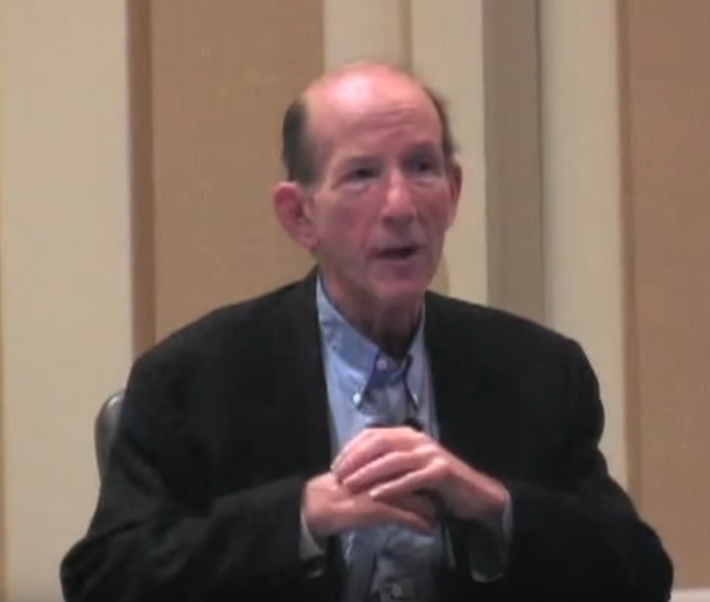History of DIR Floortime


The History of DIR Floortime has been changed by some of Dr. Greenspan former collegues and non-Greenspan Floortime organizations. To fully understand his work, one must understand how he created it. in the 1970s, Dr. Greenspan recognized that existing theories to understanding child development were incomplete To develop a more comprehensive framework, he drew inspiration from diverse fields like psychology, psychoanalysis, and occupational therapy to create a holistic psychodynamic developmental model. He aggregated the works of thinkers like Erickson and Freud illuminating the power of relationships and emotional bonds, while Skinner shed light on human behavior, Ayres on sensory-motor development, and Piaget on cognitive growth and progressive milestones. He further refined and developed DIR and Floortime with years of real world clinical experience.
**It is important to understand that his DIR Model and his Floortime approach are two related but different elements of his framework.
- DIR is a theoretical model used to assess children to determine their individualized social-emotional profile. DIR is now known as Greenspan/DIR
- Floortime is an intervention to encourage natural developmental growth within the components of his DIR Model. Floortime is known as The Greenspan Floortime Approach® or Greenspan Floortime®
Essentially, the Greenspan/DIR model provides the “why” – a comprehensive understanding of child development – while Greenspan Floortime® provides the “how” – a practical method for supporting that development through meaningful interactions.
To preserve the integrity of Dr. Greenspan’s groundbreaking work, Stanley I Greenspan MD Inc. emphasizes the distinction between his official original framework and variations that have emerged. Specifically, The Greenspan/DIR Model and The Greenspan Floortime Approach® as the official and authentic versions. This decision stems from a desire to ensure that Dr. Greenspan’s legacy, which has benefited countless children, remains true to its core principles.
Nancy Greenspan, Dr. Greenspan’s wife and close collaborator, played a key role in this effort. She co-authored 4 books with him, including First Feelings in 1985, the first description of the DIR model for parents and The Essential Partnership in 1989 where the term Floortime was first used. Shortly after Dr. Greenspan’s death in 2010, witnessing how others were adapting his methods, particularly in online materials and inconsistent application, she sought to uphold the fidelity of his original vision by trademarking The Greenspan Floortime Approach®.
This commitment to preserving the authenticity of The Greenspan Floortime Approach ensures that families and professionals can access the purest form of Dr. Greenspan’s work, safeguarding the effectiveness of his methods for future generations.


*Unfortunately, thought legal loopholes, numerous non-Greenspan Floortime groups are using Dr. Greenspan’s likeness and terminology without the permission of Stanley I Greenspan MD Inc.
**To achieve greater scalability for their training programs and services offered, these groups have changed his core concepts, principles, and techniques impacting the fidelity of his framework.
In Dr. Greenspan’s own words: the History of DIR Floortime


Dr. Stanley Greenspan responded to a question about the development and history of DIR Floortime during a 2009 conference:
Now, many of you have been asking about the history of this model. How did it all start? Way back when I first got interested in mental health, which was in college, I was a sophomore in college, and I was saying, what the heck am I going to do with my life? I only had three choices in my family doctor, doctor, or doctor. And then said, okay, I’ll become a psychiatrist going to mental health. And that was the beginning.
And I had no idea I would get interested in children at that time. Then as I got into my residency training program in mental health, I said,this starts early in life, in childhood. So I said, Why don’t I do some child psychiatry training? Why waste my third year just being an administrator where you became sort of a chief resident on different services? So I said, okay, I’ll do child psychiatry, but I’ll just do a year of it just to get a flavor. So I was going to work with adults, but I was lucky.
I came down to Washington and worked with Reg Lorrie, and he said, babies first three years of life. As I got more and more interested in younger and younger children because it only made sense, I began saying, okay, who are the theoreticians who can help me develop a framework for understanding how development occurs?
So I started reading the psychoanalytic literature. I started reading Piaget. I started reading the behavioral literature because I had taken a course with BF Skinner in college. So I read about operant conditioning. There’s not that much known about human development, not much known known about the human brain. Why don’t I try to master that limited knowledge that is known?
So I began doing some monographs, and this corresponded to after I had done a year of child psychiatry training. I went over to NIMH on a special program and started doing research there. Then I was given an opportunity to go over to the Mental Health Study Center, where I was just there at the right time. They wanted to change things, and I got the opportunity to be director of the mental health study center, and I could create a new program.
We created the Clinical Infant Development Program. And in that program, I hired Serena, and she became our clinical director for our program. We worked with multi-risk families, and that’s where we brought in a lot of the leading experts.
But I did two monographs, one integrating psychoanalytic and operant Conditioning, which is at the heart of ABA [Applied Behavior Analysis] theory as a model. And then I did another monograph integrating Piaget and psychoanalysis called Intelligence and Adaptation, which is still available, by the way, for those who are interested. And in the Piaget monograph, and you’ll see the last chapter is basically our DIR model in the sense that it has the stages of development, the six stages, core stages, and the advanced stages, which is a synthesis of what these pioneers had observed. But it took the pieces they observed, the affect piece, the cognitive piece. I also studied what the motor theorists had and the sensory theorists tried to learn from my OT colleagues. We had a team of people at the Mental Health Study Center and our clinical development program and put all that into the model.
So that was the beginnings of the model. Many of you asked me how how it all started.
And then we were working with families. So it became informed by the real world, by working with real families and children who were having problems, some of whom were beginning to look autistic even in the first year of life. But we had the chance to follow them progressively. We had a chance to see them as they were developing their problems, not from older child special needs model on down, which is the way the rest of the field was going. So we were coming at it from the bottom up, not from the top down. And that’s why we developed an affect based approach because we saw that that was so critical to all this.
So that was at the heart and the beginning of it. And then it became further and further developed.
Listen to Dr. Stanley Greenspan recount the history of DIR/Floortime below:
Take a deeper dive into Dr. Stanley Greenspan’s Floortime approach with our many Greenspan Floortime Learning Options!
Learn more about Dr. Stanley Greenspan and The Greenspan Floortime approach. If you are new, we have a background and introduction to Greenspan Floortime including how it helps special needs children. We also have Greenspan Floortime training courses at Floortime U. specifically designed for parents and professionals including the Floortime Manual.
For in-person services contact The Floortime Center.